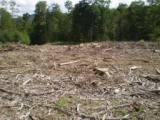 |
Volume 1, Issue 6 - October 2010
|
 |
| |
|
|
|
|
|
|
|
| From the Editors |
Meg Sheehan & Josh Schlossberg
While
the scientific and public health data on the toxic impacts of biomass
incineration continues to grow, industry backlash is accelerating. Right
now, the biomass industry is attacking the U.S. EPA’s efforts to reduce
mercury pollution from biomass boilers.
Let’s
have a reality check here—why are we even talking about mercury
emissions from a so-called “green energy” source? Why should clean
energy tax money go to incinerators that emit mercury, one of the most
toxic substances known to science?
The
good news is that citizens with common sense are not fooled by the
industry’s greenwash and are stepping up their opposition to the biomass
scam. Read more in this month’s issue of Biomass Busters.
|
| State Lines |
Massachusetts Proposes to End Subsidies for Big Biomass
September 17, 2010 The Massachusetts Department of Energy Resources
has proposed to deny Renewable Energy Certificates or REC's (a taxpayer
and ratepayer subsidy) to large-scale, electricity-generating biomass
incinerators in its draft regulations for the state's Renewable
Portfolio Standard (RPS).
Proposed regulations would require
biomass incinerators to operate at 60% efficiency to qualify for full
RECs and 40% for partial subsidies. Electricity-generating biomass
incinerators operate at less than 25% efficiency. Regulations would also
require certification from a forester that "no more than 15 percent of
the total weight of all forest products harvested from a given forest
harvest area" be removed for biomass, and a forest impact assessment be
conducted every five years.
"If these standards are enacted as proposed," said Bob Cleaves, president of Biomass Power Association, "I'm quite certain that there will be no new development in New England," calling standards "unachievable."
If
draft regulations are enacted, five out of six biomass incinerators
currently proposed for Massachusetts would fail to qualify for RECs.
WA Citizens Sue on Incinerator Siting
September 10, 2010 The state of Washington's Concerned Citizens of Mason County filed
a petition for review in Mason County Superior Court claiming that the
Port of Shelton wrongfully signed a lease option with developer ADAGE before conducting an environmental review on the siting of a proposed biomass incinerator.
Concerned Citizens' spokesperson
Fran Prescott said "the Port has inappropriately made the decision to
obligate itself to lease land before knowing what the environmental
impacts of that decision will be."
Vermonters Scrutinize Biomass Impacts
September 25, 2010 Over 100 people from the southwestern Vermont town of Pownal and surrounding areas attended an open house held by Beaver Wood Energy on their proposed construction of a 29-megawatt biomass incinerator and wood-pellet facility.
The
vast majority of attendees voiced concerns about the incinerator during
a question and answer session on issues including air pollution, truck
traffic, water use, property values, climate impacts and forest
destruction.
Pownal resident Ray Bub, member of Pownal Fire
District's Water Board, said he was "very, very concerned" about the
plan to cool the incinerator with an average of 500,000 gallons a day of
river and well water. Bub spoke of local wells already running low and
feared the project "might just pump this aquifer dry."
Members of the Concerned Citizens of Pownal (www.pownalbiomass.info) distributed information during the meeting demonstrating the health and environmental impacts of biomass incineration.
|
| From the Forest |
Study Shows Wood Ash is Radioactive
A study published in the Health Physics Society's Newsletter
in 1991 [Vol. 18, No. 4] by Stewart Farber concluded that wood ash "is a
major source of radioactivity released into the environment," based on
the presence of radioactive Cesium-137 (Cs-137) in New England wood ash
samples.
Forty-seven data sets collected by sixteen scientists in
fourteen states concluded that, excepting California, wood ash samples
with radioactive Cesium exceeded--some by 100 times or more--the
levels of Cesium legally released from nuclear reactors. "Cs-137 was
created and dispersed worldwide in the environment primarily from the
open air testing of atomic bombs" in the US and Russia, said Farber.
According
to Farber, federal law requires nuclear reactor byproducts to be
disposed of as "radioactive waste" if Cesium levels reach even 1% of the
levels found in wood ash samples. Proper disposal of wood ash from
industrial burners would cost up to $30 billion a year.
Biomass
incinerators, such as Burlington, Vermont's 50-megawatt McNeil
incinerator, provide wood ash for farmers to use as fertilizer.
Biomass Industry & NRDC Write EPA
Sept. 15, 2010 Natural Resources Defense Council President Frances Beinecke and Biomass Power Association President Bob Cleaves co-signed a letter to U.S. Environmental Protection Agency Administrator Lisa Jackson asking the EPA
to "establish a full-cycle carbon accounting system" for biomass
emissions in order to "incentivize practices which lead to biomass
utilization resulting in the maximum reduction in greenhouse gas
emissions."
Representing the "leading association of biomass to
energy producers and the nation's most foremost environmental groups,"
co-signers Beinecke and Cleaves claim they are "confident that biomass
needs to play a large role in our clean energy future."
Vermont's McNeil Biomass Incinerator
The
50-megawatt McNeil biomass incinerator has operated for 26 years on the
edge of downtown Burlington, VT, 200 yards away from the nearest
residences. The incinerator, jointly owned by Burlington Electric Department
and three partners, has been the source of multiple citizen complaints
including breathing problems, "pungent" odors, "disturbing" noise, and
dust.
McNeil incinerator sources its wood from the forests of
Vermont, New York, Quebec, New Hampshire and Massachusetts, including
clearcuts up to 25 acres.   [Photos are from logging sites in Worcester and Moretown, Vermont, providing feedstock to McNeil.] [Photos are from logging sites in Worcester and Moretown, Vermont, providing feedstock to McNeil.]
|
|
| Take Action! |
Urge your U.S. Senator to support Home Star Energy Retrofit Act.
Find your Senator here: www.senate.gov (upper right hand corner of webpage).
|
 |
|
|
| Legislation Watch |
Home Star Energy Retrofit Act
http://thehill.com/blogs/congress-blog/energy-a-environment/96197-energy-efficiency-means-more-jobs-rep-peter-welch
Rep. Peter Welch's (D-VT) Home Star Energy Retrofit Act
(H.R. 5019), [passed in the House on May 6, 2010 and to be voted on in
the Senate] is a common sense idea that would create jobs and provide a
boost to local economies, while helping families afford their energy
bills.
By encouraging homeowners to invest in energy efficiency retrofits, Home Star
would create 170,000 manufacturing and construction jobs that could not
be outsourced to China. It would also help more than 3 million
Americans invest in energy-saving technology, saving families close to
$10 billion on their energy bills over 10 years.
Expanded nationally, Home Star would save as much energy as taking three coal-fired power plants offline or hundreds of thousands of cars off the road.
|
 |
|
|
| Our Health |
Comments to EPA on "Tailoring" Rule for Greenhouse Gas Emissions
Dr. Ron Saff, M.D., Florida
If
these biomass plants are allowed to continue to be approved, the
consequences will be massive deforestation and an increase in death,
disease and cancer.
Biomass plants release tons of particle pollution--According to the American Heart Association, there is no safe threshold for particle pollution, in other words, there is no safe level or number. The AHA states that the National Ambient Air Quality Standards (NAAQS) are not stringent enough to protect our health.
There
is a linear relationship between the amount of air pollution and the
amount of heart attacks and death, not only from heart disease but from all causes. In other words, the higher the level of particle pollution, the higher the death rate and the only safe level is zero.
In
short, the hazardous health impacts including death, disease and cancer
are well known and acknowledged by the medical community. Physician
groups and medical associations representing tens of thousands of
doctors across the U.S. have weighed in against the deadly impacts of
biomass plants. |
 |
|
|
| Trashing the Climate |
Fibrowatt Defeated Again (and Again)
Mike Ewall, Energy Justice Network
Energy Justice Network's 11-year campaign against large-scale poultry litter (manure and wood) incinerators is having a banner year. In March, Fibrowatt's proposed incinerator in Page County, VA was defeated after a one-month fight. In April, one of Fibrowatt's three proposals in North Carolina was defeated after a 3-year fight when Surry County officials rejected it.
Most recently, in Hart County, GA, a rapid and massive citizen uprising drove Fibrowatt out of the entire region in only six weeks.
Another poultry waste incinerator, fought by NAACP
in Steelton, PA, was stopped earlier this year before we even learned
of the proposal. With the addition of a grassroots group fighting Fibrowatt in Chile, our global network against poultry waste incineration now spans four continents. To learn more please go to www.energyjustice.net/fibrowatch.
|
 |
|
|
| Solutions |
Solar Hot Air Heaters
http://www.energy4you.net/hotair.htm
A
solar hot air system's primary use is to provide heated air for home
heating needs. This is done with a solar collector panel, which is
mounted on a roof or wall with a clear unobstructed view of the sun. In
northern climates a wall mount may be preferred.
How it works.
The sunlight passes through the glass onto the absorber plate. A
temperature sensor in the collector panel sends a signal to a
differential controller, which compares the interior air temperature to
the panel's temperature. When the sun has heated the panel's interior
temperature above the home's air temperature, the controller turns on a
circulation fan. Cool air is blown through the collector and heated by
the collector plate. The heated air is then returned to the home. The
fan continues to run until the home is sufficiently heated.
|
 |
|
|
|
|
|
|

